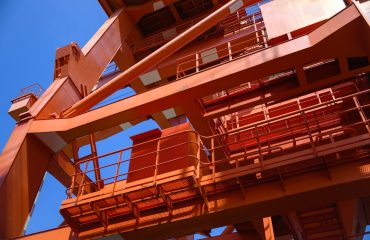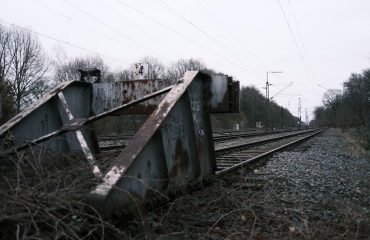Selecting the right piping system for a chemical plant is critical for safety, efficiency, and longevity. The wrong choice can lead to leaks, corrosion, equipment failure, and even catastrophic accidents. This comprehensive guide will walk you through the key factors to consider when choosing pipes for your chemical processing facility.
1. Understanding Chemical Compatibility: The Foundation of Pipe Selection
Before considering anything else, you must thoroughly understand the chemical compatibility of the proposed pipe material with the substances it will carry. This involves reviewing the Safety Data Sheets (SDS) for each chemical and cross-referencing them with the material compatibility charts provided by pipe manufacturers. Factors to consider include:
- Chemical Composition: The specific chemical makeup of the fluid will dictate its reactivity with different pipe materials.
- Temperature: Elevated temperatures can significantly alter the reactivity of chemicals and potentially weaken the pipe material.
- Pressure: High pressure can exacerbate chemical reactions and increase the stress on the pipe, potentially leading to failure.
- Concentration: The concentration of the chemical can affect its corrosiveness.
- Presence of Impurities: Trace amounts of impurities in the chemical stream can dramatically change its behavior and compatibility.
Using specialized software or consulting with a chemical engineer experienced in material selection is highly recommended to ensure accurate compatibility assessment.
2. Pressure Ratings and Flow Requirements: Ensuring Operational Integrity
Chemical plants often operate under high pressure and flow rates. The selected pipe must withstand these conditions without compromising its structural integrity. Consider the following:
- Maximum Operating Pressure (MOP): The pipe’s pressure rating must exceed the maximum expected pressure within the system, including pressure surges.
- Design Pressure: This is a calculated value that considers factors like safety factors and potential pressure fluctuations.
- Flow Rate: The pipe’s diameter must be sufficient to handle the required flow rate without excessive pressure drop or turbulence.
- Fluid Velocity: High fluid velocities can cause erosion and increase wear on the pipe’s inner surface.
- Pipe Schedule: This refers to the pipe’s wall thickness, with higher schedules indicating thicker walls and greater pressure resistance.
Proper hydraulic calculations are crucial to determine the appropriate pipe diameter and schedule for optimal performance.
3. Corrosion Resistance: Protecting Against Degradation
Corrosion is a significant concern in chemical plants, where many fluids are corrosive. The chosen pipe material must offer sufficient resistance to prevent degradation and maintain the integrity of the system. Common materials with varying degrees of corrosion resistance include:
- Stainless Steel: Offers excellent corrosion resistance in many chemical environments, particularly austenitic grades like 304 and 316.
- Carbon Steel: Less expensive than stainless steel but more susceptible to corrosion, often requiring protective coatings or linings.
- Duplex Stainless Steel: Combines the strength of ferritic stainless steel with the corrosion resistance of austenitic stainless steel.
- PVC and CPVC: Thermoplastics suitable for certain corrosive chemicals but limited by temperature and pressure ratings.
- Fiberglass Reinforced Plastic (FRP): Highly corrosion-resistant and lightweight but may have lower pressure ratings compared to metals.
The choice of material depends on the specific corrosive chemicals present and the operating conditions.
4. Temperature Considerations: Impact on Material Properties
Temperature plays a critical role in pipe material selection. High temperatures can weaken materials, reduce their corrosion resistance, and even cause creep (slow deformation under stress). Conversely, low temperatures can make materials brittle and prone to cracking. Factors to consider include:
- Maximum Operating Temperature (MOT): The chosen pipe material must have an MOT that significantly exceeds the highest expected temperature in the system.
- Thermal Expansion: Different materials expand and contract at different rates when subjected to temperature changes. This must be accounted for in the piping design to prevent stress and potential failure.
- Cryogenic Applications: Special materials like certain stainless steels or nickel alloys are required for applications involving extremely low temperatures.
- Insulation: Proper insulation is often necessary to maintain temperature control and prevent excessive heat loss or gain.
Careful consideration of temperature fluctuations and their impact on the pipe material is essential.
5. Cost and Maintenance: Balancing Performance and Economics
While performance and safety are paramount, cost and maintenance must also be considered. The initial cost of different pipe materials varies significantly, as does their lifespan and maintenance requirements. Factors to consider include:
- Initial Material Cost: Stainless steel is generally more expensive than carbon steel.
- Installation Cost: Different pipe materials may require different installation techniques and specialized equipment.
- Maintenance Cost: Corrosion-resistant materials require less frequent maintenance and repairs.
- Lifespan: Choosing a durable material can lead to significant long-term cost savings by reducing the need for frequent replacements.
- Environmental Considerations: The environmental impact of manufacturing and disposing of different pipe materials should also be considered.
A comprehensive cost-benefit analysis should be conducted to determine the most economical and sustainable option.
Choosing the right pipe for your chemical plant is a complex process requiring careful consideration of many factors. Consulting with experienced engineers and utilizing specialized software can significantly improve the accuracy and safety of your selection process.
Tags: Chemical Plant Piping, Pipe Selection, Chemical Compatibility, Pressure Ratings, Corrosion Resistance




